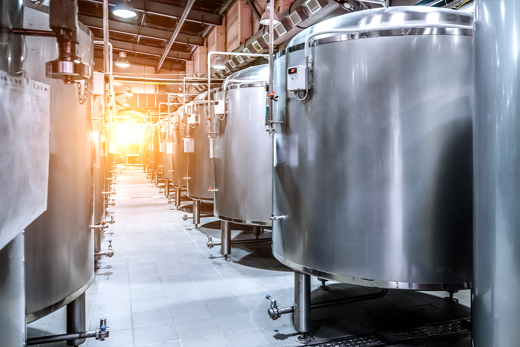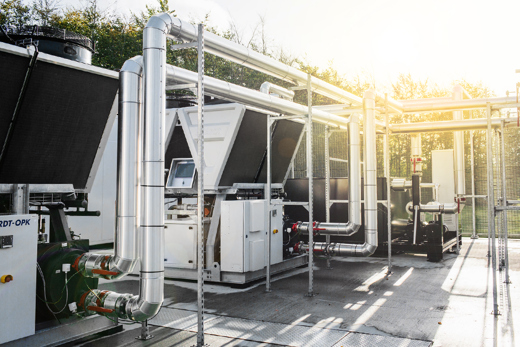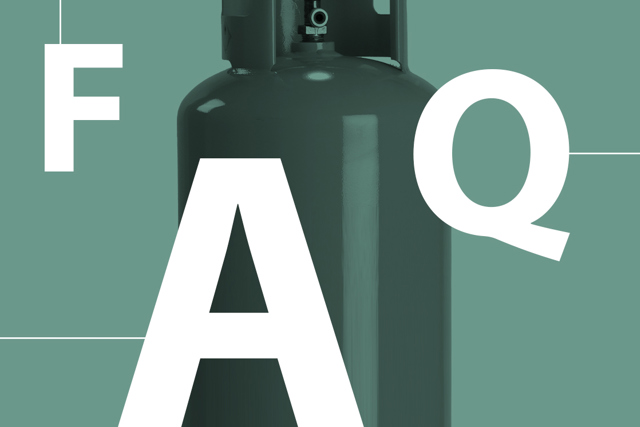Equip yourself with refrigerant expertise
We know refrigerants, and we're committed to empowering you with the expertise, information, and tools essential to your success in the field. Whether you’re installing a chiller on a new high-rise or retrofitting a cold room, we want you to have the resources needed to get the job done right, get it done quickly, and be the go-to refrigerant expert your clients need.


Refrigerant trends

Industrial Refrigeration
While the industrial refrigeration landscape initially appears free from issues related to low global warming potential refrigerants, we believe there is still potential for innovation in this sector. Due to its excellent efficiency and the relatively straightforward pump circulation technology, Ammonia is the preferred refrigerant for industrial refrigeration. Anticipations are high for its expanding usage in other sectors, driven by the growing demand for sustainable refrigerants.
Yet, there are scenarios in which ammonia encounters limitations in acceptance, primarily because of its toxic nature. Concerns related to location, among other factors, may result in requests to impose restrictions on the quantity of ammonia that systems can be charged with.
Subsequently, the quest for an alternative solution arises, aiming to minimize efficiency loss best possible. This is where technologies for limiting the circulation rate, dry expansion or related solutions come into play. Implementing ammonia as the primary refrigerant paired with CO2 as the coolant yields remarkably impressive performance metrics, particularly in contrast to brine systems. In varying climate zones, transcritical CO2 systems may emerge as a viable alternative. Hence, the excitement in this segment persists.

Commercial Refrigeration / Food Retail
Commercial Refrigeration (CR) and Food Retail (FR) applications are diverse regarding systems types and refrigerants used. They includes cold rooms, glass door merchandizers, and display and islands cabinets, either in centralized or plug-ins—hermetic or autonomous cooling circuits with condensing units.
Hermetically sealed applications are suited for using low-GWP refrigerants, which are safe due to their low charge amounts. Many of these systems already use hydrocarbons like R600a and R290. The EU phasedown has required GWP values below 150 since 2016.
Condensing units have a refrigerant charge that is typically between 5 and 20 kg. Safety in regard to flammability is imperative as many of these systems can be accessed by the public.
High-GWP refrigerants like R404A have been used for many years, but new alternative, A1-classified HFCs have a GWP of less than 60% of R404A. Nevertheless, the impact of higher compressor discharge temperatures on the operating envelope and the impact of refrigerant glide on cooling performance present new challenges. We believe that the market will move to lower GWP solutions like CO2, R290 (Hydrocarbons), or HFO blends.

Chillers / Heat Pumps
When it comes to refrigerants, chillers are generally divided into two categories: low/medium (L/M) and medium/high (M/H) pressure. L/M pressure chillers can benefit from the use of pure HFOs (R1233zd and R1234ze), resulting in a GWP close to zero. The flammability penalty is very low and manageable, especially for systems installed outdoors or in machine rooms. We can expect that in the short-to-medium term, this type of systems will adopt ultra-low GWP refrigerants. The upper GWP limit, for large L/M chillers, could reach 630, which corresponds to the GWP of HFO blend R513A, listed by the EPA-SNAP regulation of July 2015. While R134a will be delisted starting in 2024.
For M/H pressure chillers, the medium GWP alternatives are in the 125-750 GWP range, but users must be willing to accept an A2L flammability classification. This should be acceptable for systems installed outdoors or in machine rooms. The market will likely move to GWP alternatives which offer the best trade-off between system costs and performance. We foresee that the choice will fall to high density/high pressure refrigerants with a GWP around 500-750.

A wide portfolio for lower-GWP refrigerants
Our portfolio for lower-GWP refrigerants is continuously expanding. Get an overview and then dive into the details in this brochure.

Want to know more about refrigerants?
Danfoss is a world leader in the supply of compressors and controls, and has one of the most extensive and complete product ranges in the HVAC/R industry. Our products are found in numerous business areas and applications. We are at the forefront in developing products using refrigerants and in evaluating the viability of new refrigerants as they are introduced.



